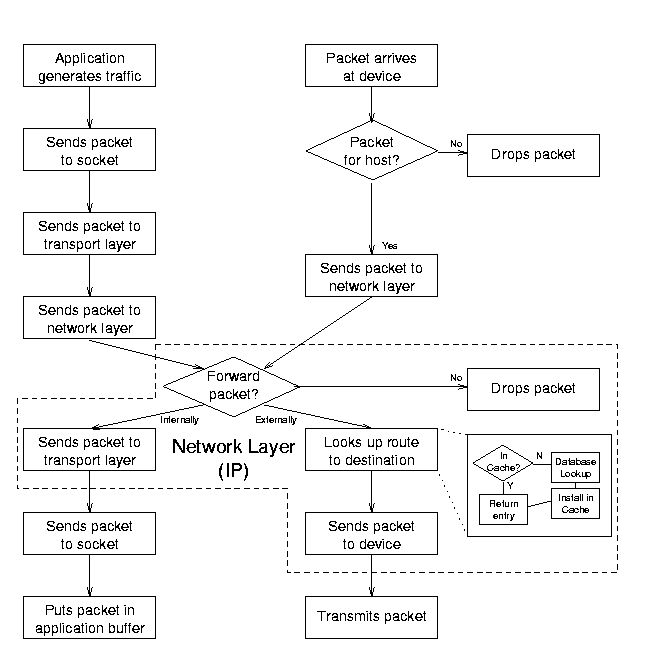The Internet Protocol (IP) is the heart of the Linux messaging system. While Linux (more or less) strictly adheres to the layering concept - and it is possible to use a different protocol (like ATM) - IP is almost always the nexus through which packets flow. The IP implementation of the network layer performs routing and forwarding as well as encapsulating data. See Figure 2.1 for a simplified diagram of how network packets move through the Linux kernel.

When an application generates traffic, it sends packets through sockets to a transport layer (TCP or UDP) and then on to the network layer (IP). In the IP layer, the kernel looks up the route to the host in either the routing cache or its Forwarding Information Base (FIB). If the packet is for another computer, the kernel addresses it and then sends it to a link layer output interface (typically an Ethernet device) which ultimately sends the packet out over the physical medium.
When a packet arrives over the medium, the input interface receives it and checks to see if the packet is indeed for the host computer. If so, it sends the packet up to the IP layer, which looks up the route to the packet's destination. If the packet has to be forwarded to another computer, the IP layer sends it back down to an output interface. If the packet is for an application, it sends it up through the transport layer and sockets for the application to read when it is ready.
Along the way, each socket and protocol performs various checks and formatting functions, detailed in later chapters. The entire process is implemented with references and jump tables that isolate each protocol, most of which are set up during initialization when the computer boots. See Chapter 3 for details of the initialization process.


 留言列表
留言列表


